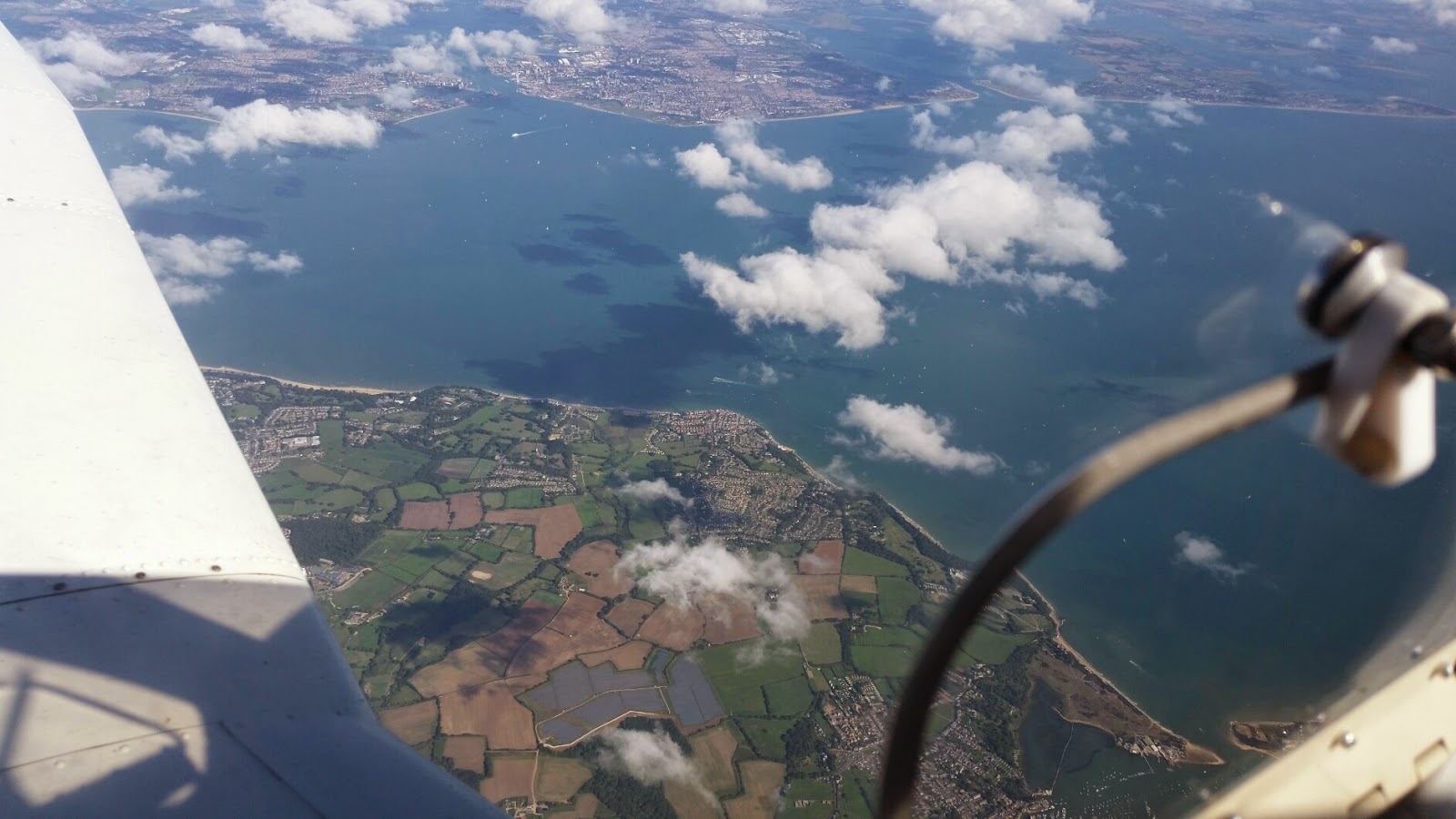Finally the forecast looked good on a day when I could fly.
I am keen to get some circuits in after my less than elegant landing at the end of my last lesson. However Shoreham airfield are only really happy for circuits to be done during the week given the disruption they cause to the typically busy weekend pattern.
Instead my Flying Instruction (FI) told me that I would be doing Instrument Appreciation - preparation for being caught in bad weather, clouds, etc. This is actually a lot of fun, and sounds easy... keeping your eyes firmly inside the cockpit, following instructions about heading and altitude purely by watching the instruments. It was a lot harder than it sounds, especially doing neat and accurate changes in altitude, and most especially while doing a FREDA check and changing fuel tanks!
To make the videos more interesting I invested in the cables and open GoPro case so I can connect GoPro audio source to the aircraft radio/intercom. There's a bit of distortion, so I've no ordered an attenuator from Abeam in Belgium and when this arrives the audio should be crisper.
Here's me doing the Power Check and Before Take-off Check with the new audio feed so you can hear how it is done...
We took off and flew to the West, but to be honest after that I was not too sure where we were as I was only looking at the controls and instruments, and not allowed to look outside. The FI kept full look-out, as required by Air Law when this exercise is underway. Essentially he called out a series of headings and altitudes that I had to track.
The main instruments used are:
- Attitude Indicator (AI) showing attitude of aircraft pitched up/down, and banked left/right
- Altimiter (ALT) showing Altitude (and indirectly Pitch)
- Airspeed Indicator (ASI) showing Airspeed (and indirectly Pitch)
- Vertical Speed Indicator (VSI) showing Rate of Climb / Rate of Descent (and indirectly Pitch)
- Direction Indicator (DI) showing Heading (and indirectly Bank)
- Turn Coordinator (TC) showing Yaw/Roll slip/ Roll skid (and indirectly Bank)
Here's an image of these instruments in the Piper Warrior...
Flying straight and level once the aircraft is in trim should be pretty easy, but it is harder than you think. There are two standard scans that you do of the instruments - alternating the primary with one of the secondaries:
- Primary Scan: AI > DI > AI > ALT > AI
- Secondary Scan #1: AI > TC > AI
- Secondary Scan #2: AI > ASI > AI
- Secondary Scan #3: AI > VSI > AI
Here's me failing to notice speed is too high and needs fixing until spotted by FI. I should have picked this up in Secondary Scan #2...
During a turn the scans change...
- Primary Scan: AI > TC > AI > ALT > AI > Ball (balance ball on TC) > AI
- Secondary Scan: AI > DI > AI
A my first instrument turn - needed better rudder control. Thankfully I got better later...
To make the aircraft climb using only instruments you apply full power, let the nose pitch up, apply a little bit of forward pressure to maintain airspeed. To level off bring power back to cruise and let the nose drop back to level.
To make the aircraft descend you put carb heat on, reduce power to 2000 RPM, let the nose drop, pitch for cruise speed, and let the aircraft descend.
While climbing and descending the scans change again...
- Primary Scan: AI > ASI > AI > Ball > AI > DI > AI
- Secondary Scan #1: AI > ALT > AI
- Secondary Scan #2: AI > VSI > AI
Here's me putting it all together doing an instrument approach back to Shoreham - still not allowed to look out of the windows. Due to the wind conditions and the fact that I had been focussing on instruments for the best part of an hour the FI did the landing (beautifully as usual - he is a great pilot)...
There's no map in this blog entry as I wasn't looking outside so had no idea where I was because I couldn't look out of the window!
Weather...
- EGKA 141450Z 23014KT 9999 -SHRA FEW009 SCT015 BKN030 09/07 Q1012
- At 14:50 GMT on 14th (December) wind 230 degrees at 14 kts, visibility 10+ km, recent light showers, few clouds at 900 ft, scattered clouds at 1,500 ft, broken clouds at 3,000 ft. Temeperature 9 degrees, dew point 7 degrees. Barometric pressure 1012 hPa.
Blood sugar readings...
> 2 hours before flight: 8.9
< 30 mins before flight: 10.5
Before landing: 9.3 (taken after landing as I knew I wouldn't be landing today)
Flying hours...
This flight: 1h
Accumulated: 13h 10m



































